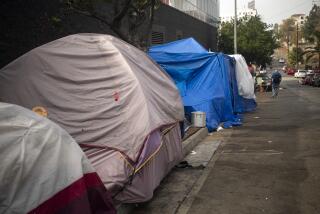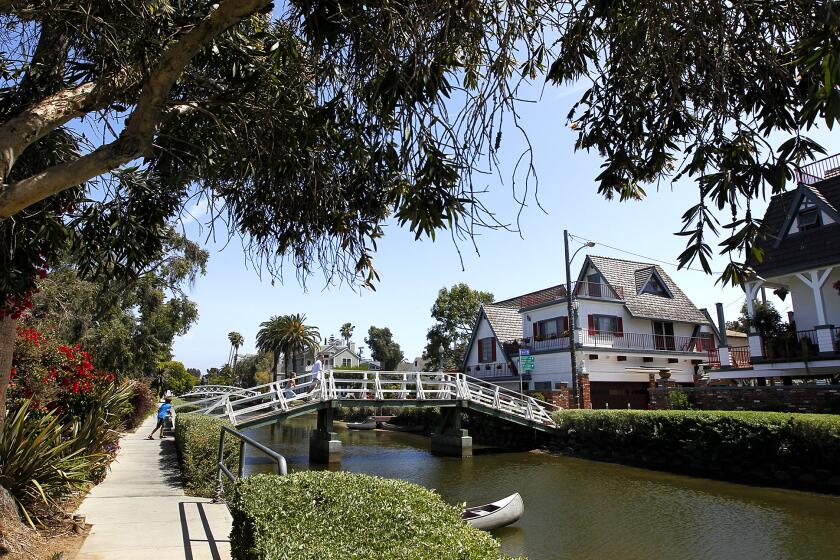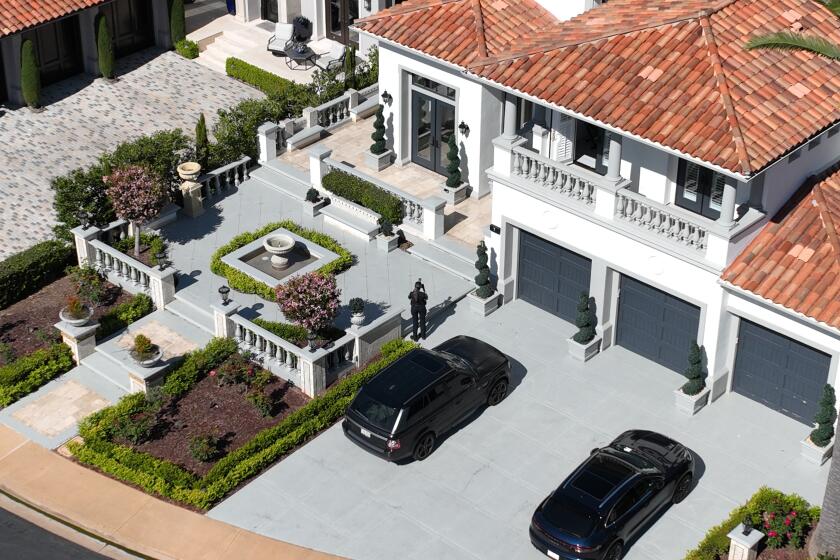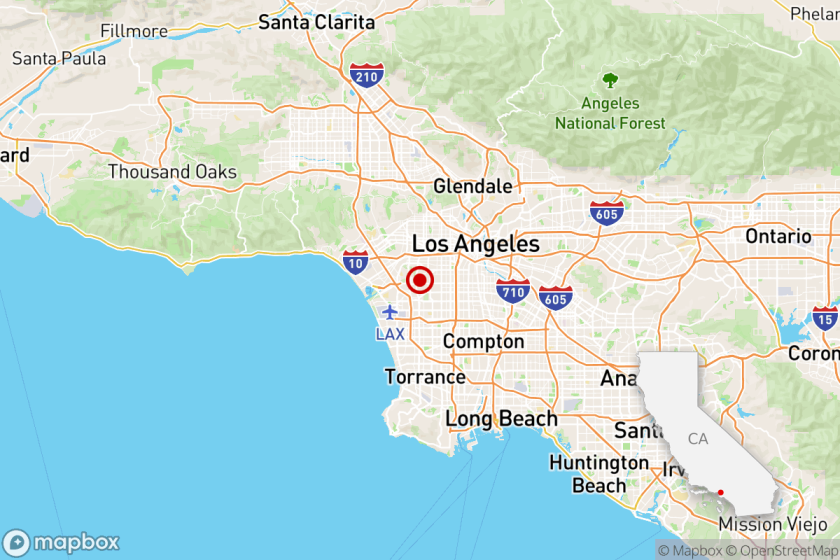Firecrackers. Molotov cocktails. Fire attacks have shaken L.A.’s homeless community
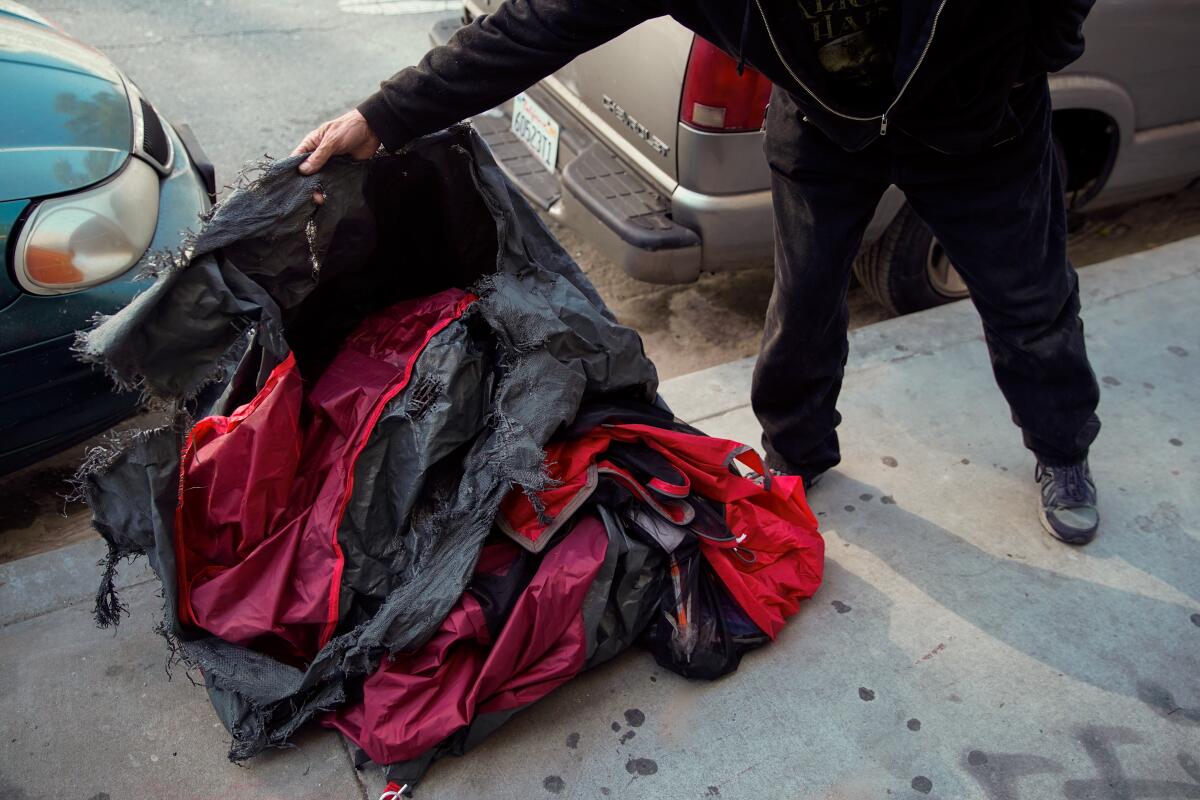
Curled up in bed with his two cats nearby, Freddie was reading a paperback novel and drifting toward sleep late on a Sunday night when someone blew a hole in the side of his home.
The last two sounds Freddie says he heard were the roar of a car engine followed by a resounding boom that left him dazed and dizzy, enveloped in smoke while his ears rang.
Freddie doesn’t think anyone was trying to hurt him specifically. But he’s certain his tent under the Sunset Boulevard overpass in Echo Park was the target of the explosion, which was set off by what police described as a firecracker.
“I know it’s not directed toward me as an individual,” he said. “But it is directed toward me as a homeless person.”
The Oct. 6 incident is the latest in a string of unsettling attacks involving fire or incendiary devices that since late August have left homeless people dead or injured and entire encampments scorched across the Los Angeles area. In at least eight different incidents, flammable liquids or makeshift explosives have been lobbed at homeless people or their tents, highlighting the dangers faced by the city’s most vulnerable population at a time when Los Angeles’ homeless crisis continues to grow and resources are spread thin.
The acts have involved homeless-on-homeless violence as well as targeted attacks from outsiders, leaving some activists concerned that frustration with the city’s growing homeless population has reached a violent tipping point.
There were 2,500 fires involving the homeless community throughout Los Angeles in 2018, double the number the city saw in 2017, said Capt. Patrick Leonard of the Los Angeles Fire Department’s arson and counterterrorism section. By the end of September, there had already been 2,320 such incidents in Los Angeles, meaning the figure is on pace to rise for the second year. The numbers include arson as well as accidental fires caused by people cooking or warming themselves.
The fires add another dangerous challenge to those living on the streets. In addition to the obvious risk of injury, activists say, the fires often destroy what little shelter homeless people have as well as documents needed to apply for housing or other services.
Through the first six months of 2019, violent crimes targeting homeless victims jumped 34%, with 1,239 reported incidents compared with 922 during the same period in 2018, LAPD records show.
The spate of incidents began in August, when authorities said two men allegedly threw a “firework” in the direction of a homeless encampment on Colorado Boulevard.
The blaze quickly grew into a brush fire that led to evacuations in Glendale and shut down stretches of the 2 and 134 freeways near Eagle Rock. A firefighter suffered minor injuries, but no one else was hurt, officials said. Two men, including the son of the Eagle Rock Chamber of Commerce president, were arrested, but prosecutors have yet to file charges and authorities have not commented on a motive.
The next day, an “ignitable liquid” was used to set fire to a tent in skid row, Leonard said. The man inside, a beloved neighborhood musician named Dwayne Fields, died a short time later. Another homeless man has been arrested and charged with Fields’ murder. White said the killing was one of a number of tent fires that ripped through the skid row area in August, with several occurring near the same intersection where Fields was attacked.
On Sept. 5, a homeless woman was accused of setting a homeless man on fire in a South L.A. encampment near railroad tracks off West Slauson Avenue, Leonard said. A week later, Glendale police arrested a homeless man who was caught on video setting a pile of cardboard boxes aflame while a man slept underneath. Glendale Police Sgt. Dan Suttles said investigators believe the suspect intentionally targeted the victim but declined to comment on a motive. Both victims sustained burn injuries but survived.
The same day, Los Angeles police found the burned body of a man stuffed into a shopping cart near a homeless encampment in the Sepulveda Basin in Van Nuys.
An autopsy revealed the victim died of a “perforating wound to the chest,” though it was not clear if the fire had been set before or after his death. A law enforcement official told The Times that the victim was homeless and that police believe the man was killed elsewhere.
Ten days later, someone lobbed a Molotov cocktail into a Chatsworth encampment where at least 15 people normally sleep, destroying a number of tents and donations recently dropped off by a local pastor, said Leonard and local activists.
Rita Dunn, who had been living in the encampment at the time, said she remembers watching fire shoot up palm trees, raining burning fronds onto people’s belongings. A number of propane tanks in the area exploded as the fire spread, according to Dunn, who said many of the encampment’s residents were asleep and could have been killed had the fire spread quicker.
“People were kind of like waking up … kind of like, what’s going on,” she said. “I was confused. I was yelling, ‘You’ve got to get out of here!’”
LAPD Cmdr. Donald Graham, who coordinates the agency’s response to issues of homelessness, noted that while there has been a surge in violent crimes committed against homeless victims, the number of violent crimes linked to homeless suspects has also jumped by 26% in the first half of 2019.
Graham said he believes the majority of the crimes involve violence within the homeless community, a situation that has worsened as the city’s homeless population grows.
“There are certainly tensions that are rising within the homeless population … the connective tissue between them all is the increase in the concentration,” he said. “As the homeless encampments increase, so do fights over territory, over property, over intangibles, as well as domestic violence.”
Graham acknowledged that anti-homeless sentiment could have played a role in attacks in places like Chatsworth, where plans to build a large homeless housing complex in the neighborhood have been met with intense resistance by locals.
Leonard and Graham warned of reading too much into the recent upticks. Neither the LAPD nor LAFD doggedly tracked incidents specific to the homeless community before 2017. Still, given the prevalence of hot plates and open flames in encampments, and the amount of flammable material often collected in a place like skid row, officials said the rise in incidents is troubling.
“The thing about fires, as opposed to any of the other crimes that the Police Department deals with, is that fire is not specific to one person,” Leonard said. “It’s not particularly targeted to one person. It can and does spread to buildings, to cars, to create panic in the community.”
In skid row, the use of fire to settle disputes has become increasingly common in encampments, said Pete White, executive director of the Los Angeles Community Action Network, a group that advocates on behalf of the homeless.
In most cases, homeless people will set fires to a neighbor’s belongings if they are hoarding bulky items or taking up too much space in cramped encampments. But fires set with the specific intent of harming a person are rare, said White, who expressed concern that people from outside the homeless community might use news of homeless-on-homeless violence as cover to stage their own attacks.
“I’m worried about when houseless people are getting down against one another … but I’m also worried about folks who see that as an opportunity to attempt to burn out homeless encampments,” he said.
Public sentiment toward the homeless community has grown increasingly tense. Los Angeles police last week shifted downtown patrols in response to city workers’ complaints that they felt unsafe entering and leaving buildings near City Hall and the Civic Center area, and attempts to provide additional homeless space in Koreatown and Chatsworth in recent months has been met with strong resistance from neighborhood groups.
In September, President Trump also claimed homelessness was “destroying” cities like Los Angeles and reports arose that his administration was considering a wide array of plans to attack the problem, including deployment of the National Guard, though no concrete policy proposals have surfaced.
“It’s that kind of approach to homelessness that I think makes it easy for the general public, who is often misinformed about why people are homeless or why they are on the street, to then respond with vitriol, and then even worse, with violence,” said Maria Foscarinis, executive director of the National Law Center on Homelessness and Poverty.
Freddie, who did not want his last name used or picture taken for fear he might be attacked again, said he keeps to himself to avoid those kinds of problems. While there are small enclaves of homeless people dotting Echo Park or Reservoir Street on either side of the overpass where Freddie lays his head, his tent stands alone.
The blast went off by his feet, but Freddie said he normally dozes off with his body in the opposite direction. His head should have been in the exact spot where the firecracker, which Freddie described as an M-80, exploded.
Freddie said he’s been living under the overpass — not far from a tattoo parlor and coffee shop — with his two cats for about four months, the result of a “downward spiral” that started when his longtime girlfriend died in 2018.
In the time he’s been on the streets, Freddie said, he’s received his share of kindness. Activists with the homeless advocacy group Services Not Sweeps provided him with a new tent shortly after the attack, and the owner of the local coffee shop met him with a smile and quickly poured him a cup when Freddie walked through the front door one morning last week.
But in recent months, Freddie said, he’s noticed people shouting or cursing at him from the overpass, sometimes throwing items at other homeless people if they drift toward the tunnel. In the days after the attack, he said, he’d slept only about three hours, the mere sound of a car engine causing him panic.
Standing next to the wrecked remains of his former tent, Freddie wondered aloud if a similar attack on a housed Angeleno would have drawn a larger police response or public outcry.
“Why am I less of a person?” he asked.
More to Read
Start your day right
Sign up for Essential California for news, features and recommendations from the L.A. Times and beyond in your inbox six days a week.
You may occasionally receive promotional content from the Los Angeles Times.

